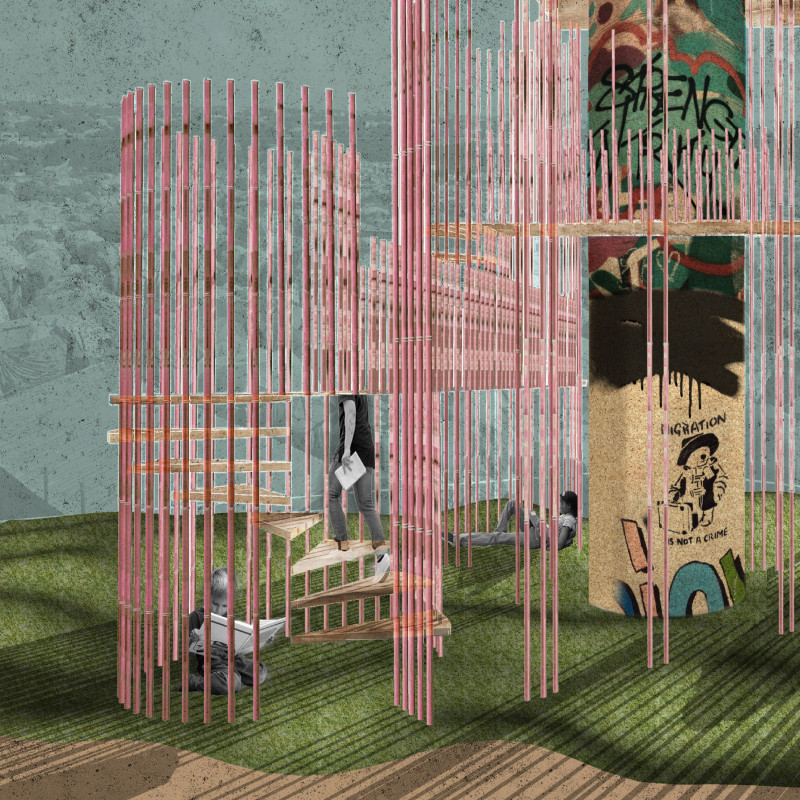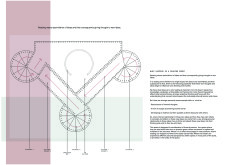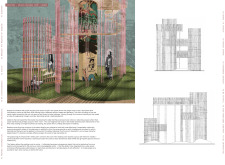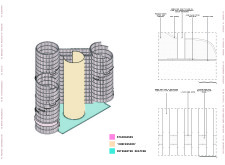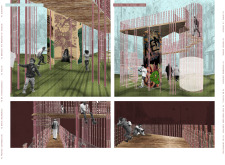5 key facts about this project
The design eloquently captures the essence of the location, drawing inspiration from local architectural styles while integrating modern design principles. Each element of the project, from the layout to the material choices, is crafted to enhance user experience and incorporate environmental considerations.
The architecture employs a thoughtful spatial organization that encourages movement and interaction among users. Open, airy interiors are balanced with more intimate spaces, allowing for versatility in how the areas are utilized. The thoughtful zoning within the project supports a variety of activities—facilitating community gatherings, private moments, and communal events, all while maintaining a cohesive flow. This balance underscores the importance of social interaction in the design, making it a focal point throughout the project.
Unique to this architectural endeavor is the way it integrates with the natural environment. The building's orientation maximizes natural light and views, creating a strong connection with the surrounding landscape. Large glass facades allow daylight to penetrate deep into the interior, reducing the need for artificial lighting and creating an uplifting atmosphere for occupants. Additionally, outdoor spaces such as terraces and landscaped gardens blur the lines between indoor and outdoor living, promoting a lifestyle that embraces nature.
Materiality plays a crucial role in the overall design philosophy. The project utilizes durable concrete as a primary structural element, providing thermal mass that contributes to energy efficiency. Alongside this, the use of natural wood adds warmth and texture, creating a welcoming ambiance. Incorporating glass not only enhances aesthetic appeal but also improves energy performance and transparency throughout the design. Unique stones, such as [specify types if known], contribute both to the visual harmony of the building and its lessened environmental impact.
Further, the project embraces sustainability through innovative design solutions. Features such as green roofs, rainwater harvesting systems, and energy-efficient HVAC systems reflect a commitment to environmental responsibility. These components not only serve practical functions but also exemplify a progressive approach to contemporary architecture, with the goal of reducing the project's ecological footprint while providing a healthy living environment for users.
Moreover, the architectural design demonstrates an understanding of the cultural context, allowing it to resonate deeply with the local community. Cultural motifs are subtly integrated into the overall design, celebrating the region’s heritage without overwhelming the modern aesthetic. This careful balance ensures that the project serves as a landmark, unifying the past and present while fostering a sense of identity.
The innovative architectural ideas employed in this project go beyond mere aesthetics. They embody a thoughtful consideration of functionality, sustainability, and community needs. By focusing on user-centric design, the project not only meets immediate requirements but also anticipates future demands, ensuring its relevance in an ever-evolving architectural landscape.
The culmination of these design elements results in a harmonious structure that stands as a testament to contemporary architecture. This project encourages exploration and appreciation of its intricacies, and for those seeking to gain deeper insights, reviewing the architectural plans, sections, designs, and underlying architectural ideas will provide further clarity into the vision and execution of this exceptional endeavor. As you explore the nuances of this project, you will find that it embodies a holistic approach to architecture, rooted in a deep respect for its environment and community.


